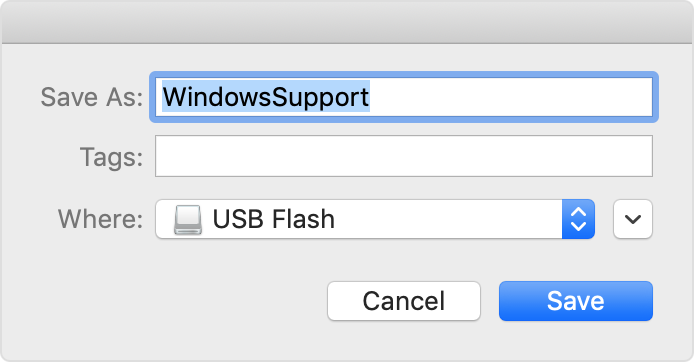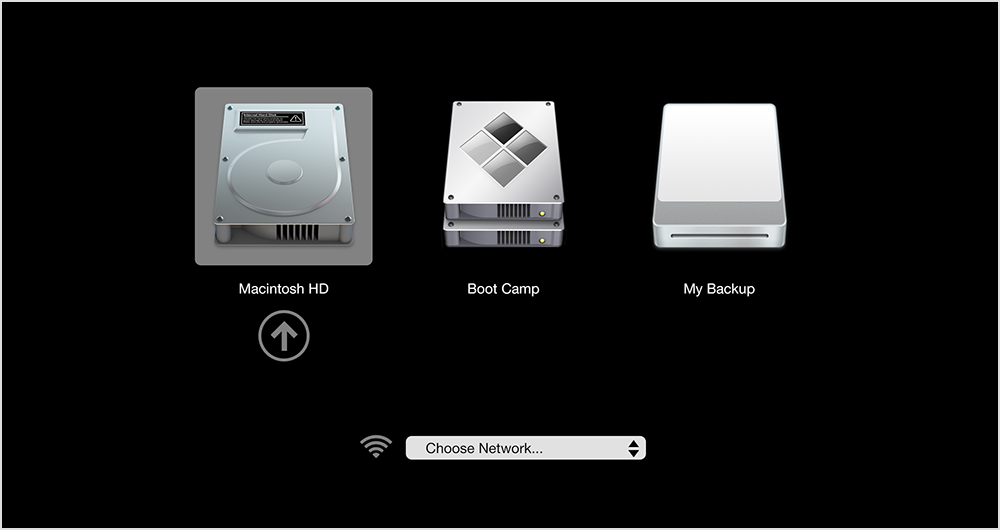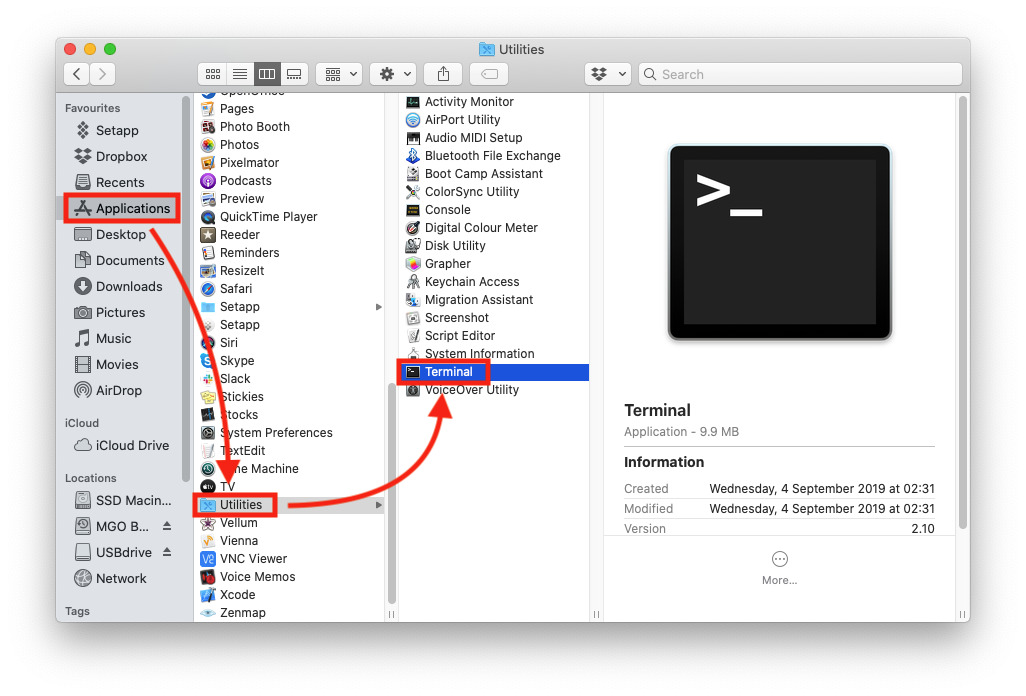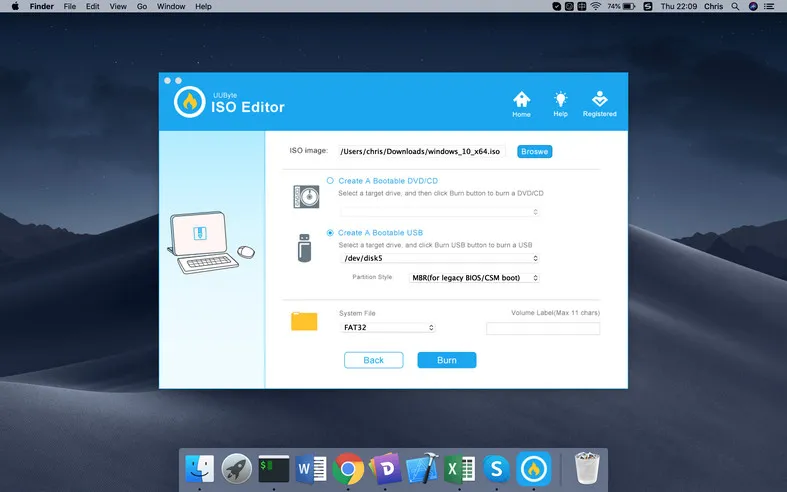Just like most storage mediums, partitioning a flash drive is also possible. There may be a number of reasons why you would want to partition a flash drive. If you have never partitioned a flash drive before, then don't worry; this article will help you. Read on to find how to partition a flash drive..
Download FlashBoot - Create bootable USB drives for installing Windows, run a complete OS from a flash drive and more, with this intuitive application. They are easier to carry and comfortable to use. Also, we can reuse a USB Flash drive unlike CDs or DVDs and after using it we can format the drive and store something else on it. But to use make a USB bootable we would need a Bootable Software. To help you create a USB bootable Drive, we have selected 10 best USB Software for Windows/Mac. Numerous advanced tips can be used to make sure that the user gets the best results when it comes to USB usage on a Mac. This tutorial will discuss the top 7 tips for using a flash drive. It will also provide a basic level of training to make the overall use of flash drive easier for Mac users. 1 Connecting Flash Drive to MAC. Then on restart, the Mac should boot from the USB flash drive. Unfortunately, the 'Startup Disk' did not list my USB flash drive as a startup option, so I was not able to use this method. To boot a Mac with the USB flash drive: Insert the USB flash drive. While holding the 'option' key down, turn on the Mac to display the Startup Manager.
Partition with Diskpart
Partition with an USB Flash Drive Partition Tool
Bonus Tip 1. Best Way to Recover Files from Flash Drive after Partition or Format
1How to Partition Flash Drive on Windows10/8.1/8/7?
Although it is possible to create multiple partitions on a flash drive via third-party tools, Windows will only read and show the first/primary partition. If you want the Windows to read a certain partition of the flash drive, then you will need a third-party tool to set that partition as primary.
Backup Your Data
Partitioning a flash drive will erase all data stored on it. That's why it is highly recommended that you back up all the important data before proceeding. The backup process is quite easy as all you need to do is connect the flash drive to your computer and copy the desired data to a location of your choice. Follow these instructions:
1. Connect your flash drive to your computer. Then open This PC on your Windows and find your flash drive.
2. Double-click on it to see its contents. Select the files that you want to back up and right-click on them and click Copy.
3. After that, navigate to the folder on your computer's hard drive where you want to store those files, right-click and select the Paste option. The transfer process will begin and your selected files will be copied to that folder.
Now that you have backed up your data, you can proceed to partition your flash drive. Following are some methods to do this:
1Partition a Flash Drive Using Diskpart
You can easily partition a flash drive via the Diskpart utility of Windows. The utility is run through Command Prompt. Follow these instructions:
Step 1. Press Windows and R key on your keyboard at the same time and type 'diskpart' in the Run pop-up window and then press Enter to launch it. A command prompt window will open.
Step 2. On that window, input 'list disk' to see which number your connected flash drive has.
Step 3. Next, input 'select disk X (X here is the number for your flash drive). It will be selected.
Step 4. Now input 'clean' and press enter to clean the device.
Step 5. Now enter 'list part' and then input 'create partition primary'. After that, input 'list part' and then input 'select partition 1'. Set this partition as active by inputting 'active'.

Step 6. Next, input 'format fs=fat32' to format the partition. After that, your newly created flash drive partition will be ready to use.
2Partition a Flash Drive with an USB Flash Drive Partition Tool
If the method to partition a flash drive via diskpart seems complicated, then there is another easier way to partition a flash drive. You can partition the USB flash drive via a flash drive partition tool called Bootit. Follow these instructions to partition a flash drive via Bootit:
Fist, you should install and launch Bootit software on your computer.
Step 1. Connect your flash drive to your computer and make sure it is detected by the operating system.
Step 2. Now open Disk Management on your computer. You can launch it from the Start Menu.

Step 3. Now select the current partition shown on the flash drive and delete it via the software.

Step 4. After that, right-click on the unallocated space of flash drive and click on New Simple Volume to create a partition. You can specify the size, label, etc. for the new partition according to your preferences.
Step 5. You can create multiple partitions on your flash drive by repeating the above step.

2How to Partition a Flash Drive on Mac?
If you want to partition your flash drive on your Mac, then you will be glad to know that it is possible. On Mac, you can do this via Disk Utility.
Steps to Partition Flash Drive on Mac
Follow these instructions to partition flash drive on Mac:
Step 1. On your Mac, open Disk Utility. And connect your flash drive to your Mac.
Step 2. Once the Disk Utility is opened, select your flash drive from the sidebar and click the Erase button.
Step 3. On the newly opened window, select OS X Extended (Journaled) from the Format menu.
Step 4. Make sure to click on Scheme > GUID Partition Map. Next, format the drive via the Erase option.
Step 5. After formatting, click the Partition button and then use the '+' button to create and add additional partitions. Add as many partitions as you like.
Step 6. After setting the sizes, labels, etc. to partitions, click Apply to confirm your action. Partitions will be created.
Bonus Tip 1. Best Way to Recover Files from Flash Drive after Partition or Format
It's wise to backup the data on your flash drive before partitioning or formatting it. So, what to do if you forgot this or some important files were left when made a backup? Don't worry, a powerful data recovery tool can help you find them back!
iMyFone AnyRecover is one of such popular data recovery tools. It can help you find all your lost files no matter how you lost them. Files recovery at a formatted or partitioned USB flash drive is easy as 1-2-3 with AnyRecover.
Key FeaturesRecover lost files from different data loss scenarios, including formatted data recovery, deleted files recovery, formatted device recovery, etc.
Recover over 1000 type of files, including photos, videos, audios, emails, documents, archives and more.
Recover files from various storage mediums, such as USB flash drive, hard drive, SD card, digital camera, computer, etc.
Differing from other recovery tools, AnyRecover is 100% safe to use, it won't do any damage to your existing data.
One of the most reliable data recovery software with high data recovery rate - Up to 98%.
Steps to Recover Files from Flash Drive after Partition or Format
Step 1. Open AnyRecover on your computer, then connect your Flash Drive to your computer, select it.
Step 2. After selecting the location, hit 'Start' button to start the process.

Step 6. Next, input 'format fs=fat32' to format the partition. After that, your newly created flash drive partition will be ready to use.
2Partition a Flash Drive with an USB Flash Drive Partition Tool
If the method to partition a flash drive via diskpart seems complicated, then there is another easier way to partition a flash drive. You can partition the USB flash drive via a flash drive partition tool called Bootit. Follow these instructions to partition a flash drive via Bootit:
Fist, you should install and launch Bootit software on your computer.
Step 1. Connect your flash drive to your computer and make sure it is detected by the operating system.
Step 2. Now open Disk Management on your computer. You can launch it from the Start Menu.
Step 3. Now select the current partition shown on the flash drive and delete it via the software.
Step 4. After that, right-click on the unallocated space of flash drive and click on New Simple Volume to create a partition. You can specify the size, label, etc. for the new partition according to your preferences.
Step 5. You can create multiple partitions on your flash drive by repeating the above step.
2How to Partition a Flash Drive on Mac?
If you want to partition your flash drive on your Mac, then you will be glad to know that it is possible. On Mac, you can do this via Disk Utility.
Steps to Partition Flash Drive on Mac
Follow these instructions to partition flash drive on Mac:
Step 1. On your Mac, open Disk Utility. And connect your flash drive to your Mac.
Step 2. Once the Disk Utility is opened, select your flash drive from the sidebar and click the Erase button.
Step 3. On the newly opened window, select OS X Extended (Journaled) from the Format menu.
Step 4. Make sure to click on Scheme > GUID Partition Map. Next, format the drive via the Erase option.
Step 5. After formatting, click the Partition button and then use the '+' button to create and add additional partitions. Add as many partitions as you like.
Step 6. After setting the sizes, labels, etc. to partitions, click Apply to confirm your action. Partitions will be created.
Bonus Tip 1. Best Way to Recover Files from Flash Drive after Partition or Format
It's wise to backup the data on your flash drive before partitioning or formatting it. So, what to do if you forgot this or some important files were left when made a backup? Don't worry, a powerful data recovery tool can help you find them back!
iMyFone AnyRecover is one of such popular data recovery tools. It can help you find all your lost files no matter how you lost them. Files recovery at a formatted or partitioned USB flash drive is easy as 1-2-3 with AnyRecover.
Key FeaturesRecover lost files from different data loss scenarios, including formatted data recovery, deleted files recovery, formatted device recovery, etc.
Recover over 1000 type of files, including photos, videos, audios, emails, documents, archives and more.
Recover files from various storage mediums, such as USB flash drive, hard drive, SD card, digital camera, computer, etc.
Differing from other recovery tools, AnyRecover is 100% safe to use, it won't do any damage to your existing data.
One of the most reliable data recovery software with high data recovery rate - Up to 98%.
Steps to Recover Files from Flash Drive after Partition or Format
Step 1. Open AnyRecover on your computer, then connect your Flash Drive to your computer, select it.
Step 2. After selecting the location, hit 'Start' button to start the process.
Step 3. After scanning, preview and select the files, then click on Recover button to get the lost files back.
Bonus Tip 2. Best USB Flash Drive for Windows & Mac
Among many quality flash drives, SanDisk Extreme PRO 128 GB Drive is considered the most popular USB flash drive for Windows and Mac. Following are the top features of this USB flash drive:
Blistering speeds: 380 MB/s write, 420 MB/s read.
Durable, sleek, and eye-catching aluminum casing design.
AES, 128-bit file encryption for excellent security for sensitive files.
USB 3.0 as well as backward compatibility with USB 2.0.
Lifetime warranty.
Starting your Surface from a USB drive can be useful if you want to change firmware settings or Windows startup settings.
Booting from a USB device doesn't refresh or reset your Surface. Instead, it lets you start your Surface using Windows or another operating system that's on your USB device.
For info about recommended recovery methods, see Restore or reset Surface.
Important: This article contains advanced troubleshooting steps. You'll need to be comfortable with using a command prompt and configuring the UEFI (Unified Extensible Firmware Interface, also known as the BIOS) on your Surface. For more info, see How to use Surface UEFI.
Make this Surface start from a USB drive
Note: If you don't want to start your Surface from your USB drive, make sure the drive isn't inserted in the USB port on your Surface when you start it.
For all Surface models
Download And Boot From A Flash Drive Mac Os
Before you start, make sure you don't have any other USB devices connected to your Surface, including USB mouse devices, keyboards, or other storage drives. Surface will try to boot from any other connected USB devices. Here's how to boot from a USB.
Shut down your Surface.
Insert the bootable USB drive into the USB port on your Surface.
Press and hold the volume-down button on the Surface. While you're doing this, press and release the power button.
The Microsoft or Surface logo appears on your screen. Continue to hold the volume-down button. Release the button once spinning dots appear beneath the logo.
Follow the on-screen instructions to boot from your USB drive.
Start from the USB through Windows
If you're having trouble starting your Surface with the bootable USB, you can try booting through Windows. To do this:
Insert the USB drive into the USB port, and then select Start > Settings > Update & security > Recovery.
Under Advanced startup, select Restart Now.
On the Choose an option screen, select Use a device > USB Storage.
Configure your Surface to start from a USB drive
Once your USB drive is set up as a bootable drive with an appropriate operating system on it, you'll need to set up your Surface to boot from this drive. This requires you to make changes in the UEFI so that the USB drive is the first option. Here's how:
Shut down your Surface.
Once Surface has turned off, press and hold the volume-up button.
With the volume-up button held down, press and release the power button.
Continue holding the volume-up button until the Surface or Windows logo no longer appears on the screen.
You should now see the Surface UEFI. You'll need to follow specific instructions for your Surface to proceed.
Change the boot order
You'll need to change the boot order so that your Surface boots from a USB.
For most Surface models
These instructions apply to these Surface models:
Surface Pro 4, Surface Pro (5th Gen), Surface Pro 6, Surface Pro 7, and Surface Pro X
Surface Book, Surface Book 2, and Surface Book 3
Surface Laptop (1st Gen), Surface Laptop 2, Surface Laptop 3, Surface Laptop Go
Surface Go, Surface Go 2
To change the Surface boot configuration:
Boot Mac From Thumb Drive
Select Boot configuration.
Select USB Storage and drag it to the top of the list. Alternatively, you can swipe left on USB Storage to boot to the device immediately. This will not affect the boot order.
Select Exit and then select Restart Now.
For Surface Pro 3 and Surface 3
Select Configure Alternate System Boot Order.
Do one of the following:
Surface Pro 3: Select USB > SSD.
Surface 3: Select Network > USB > SSD.
Select Exit Setup.
Select Yes to save the configuration and restart Surface.
For Surface Pro (1st Gen) and Surface Pro 2
Mac Os Boot Disk Download
Note: This may affect the look of your Surface splash screen.
Select Secure Boot Control.
Select Disable. This will allow Surface to search for an alternate device to boot from instead of from your SSD.
Select Exit Setup.
Select Yes to save the configuration and restart Surface.
The USB drive doesn't work
Make sure that the USB drive is formatted as FAT32. Here's how to ensure the USB device is properly formatted as a bootable drive:
Warning: Setting up the USB drive will erase everything that's stored on it. Make sure to transfer any important data on your USB drive to another storage device before continuing.
Insert a USB drive into your Surface. (The USB drive should be at least 16 GB. If you have a Surface RT or Surface 2, an 8 GB USB drive will work.)
Open a Command Prompt window as an administrator. (To do this, right-click Command Prompt and select Run as administrator.)
In the Command Prompt window, enter diskpart, and then press Enter.
To determine the drive number or letter of the USB drive, at the command prompt, enter list disk, and press Enter.
The list disk command displays all the disks on the computer. Note the drive number or drive letter of the USB drive.At the command prompt, enter select disk X (where X is the drive number or drive letter of the USB drive that you noted in the last step), and press Enter.
Enter clean, and press Enter. This will delete all data from the USB drive.
To create a new primary partition on the USB drive, enter create part pri, and press Enter.
To select the partition that you just created, enter select part 1, and press Enter.
To format the partition, enter format fs=fat32 quick, and press Enter.
Enter active, and press Enter.
Enter exit, and press Enter.
When you have the operating system image that you want to boot to, save it to the root of the USB drive.
If that's not the problem, check the following:
Make sure that Enable Boot from USB devices is On under Advanced options of the UEFI Boot configuration screen. To find out how to boot to the UEFI configuration, see How do I use the BIOS/UEFI? and How to use Surface UEFI.
If you have configured a boot order, check the Advanced options in the UEFI Boot configuration screen to ensure that Enable alternate boot sequence is On. To find out how to boot to the UEFI configuration, see How do I use the BIOS/UEFI? and How to use Surface UEFI.
Use another USB drive, if possible.
If you currently have a Windows Insider build installed, you may need to first turn off and then turn on Secure Boot for the USB boot drive to be recognized. For more info on how to change Secure Boot, see How do I use the BIOS/UEFI? and How to use Surface UEFI.
